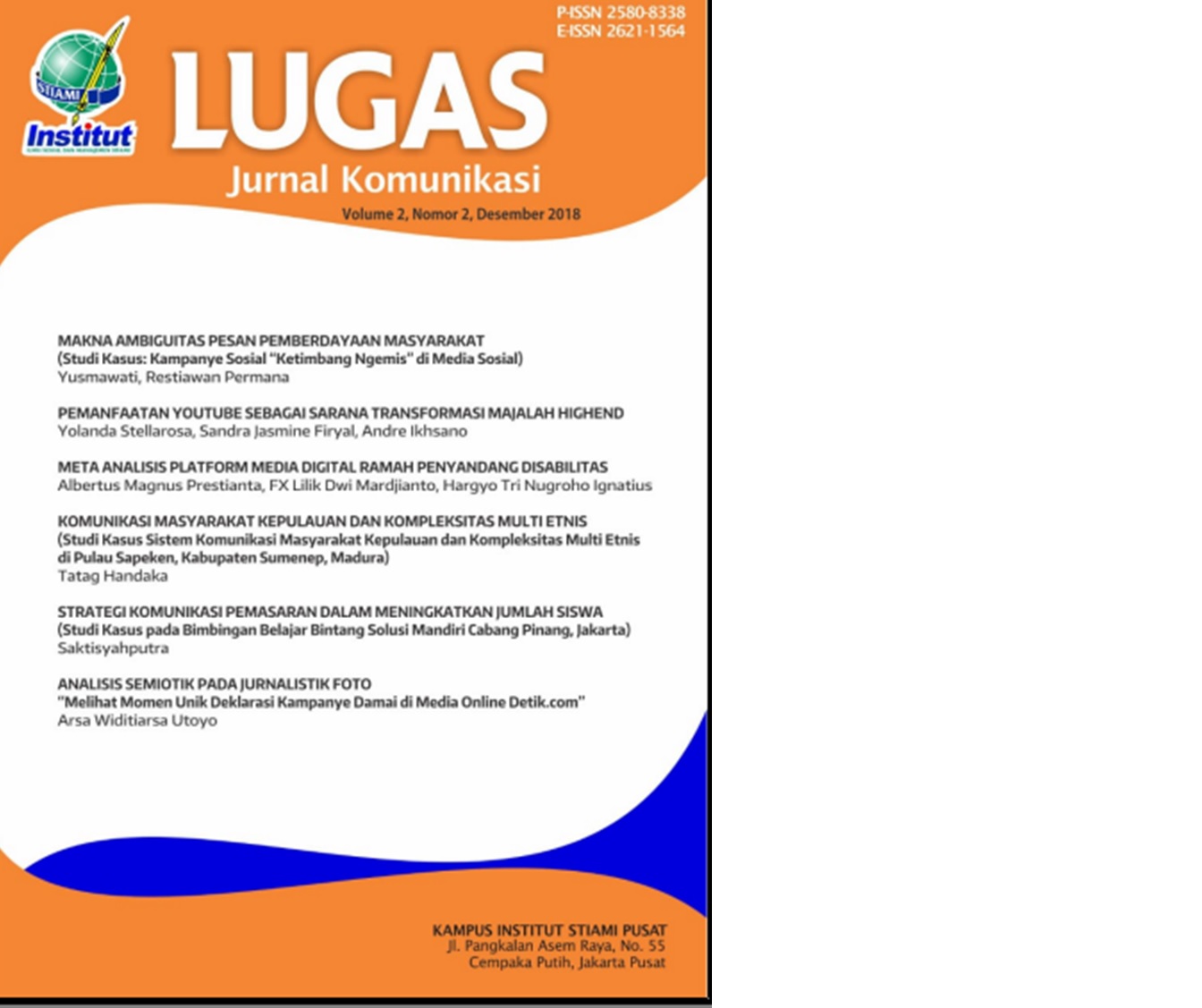Diskursus Kredibilitas dan Pertimbangan Etika Pers dalam Proses Produksi Berita Viral #Justiceforaudrey di Liputan 6 Siang SCTV
DOI:
https://doi.org/10.31334/lugas.v4i1.935Keywords:
Critical Discourse Analysis Viral News Economi PoliticAbstract
Viral events on social media are often made into the news. One of the social media viral events that made the news in mid-2019 was #JusticeforAudrey. Allegations of violence against Audrey made headlines in all mass media, including on Liputan 6 Siang SCTV. During April 2019, projections related to Audrey's coverage were submitted by producers every day. The news values that is the basis for determining the feasibility of an event to become news is no longer the priority of producers. This research paradigm is critical with a qualitative approach and uses the Fairclough Critical Discourse Analysis method. Theory of Political Economy Vincent Mosco explains the practice of viral news values is the practice of commodification of content and audiences. Viral social media events are considered attractive to internet users and expected to attract tv viewers. The practice of viral social media news is the commodification of content. Meanwhile, in the commodification of audiences, television news viewers in the form of rating & share are used as sales to advertisers, which in turn become an economic advantage for media corporations.
References
Choiriyati, Wahyuni, “Manifestasi Pragmatisme Pendidikan Politik – Analisis Resepsi pada Komodifikasi Berita Selebriti Politisi,†Jurnal Lugas, Vol. 1 No. 1, Hal 40-54, Juni 2017.
Eddy, Gusti. (2019). Kurang dari 24 Jam Petisi Justice For Audrey Ditandatangani Lebih dari 3 Juta Orang. www.daerah.sindonews.com
Eriyanto. (2012). Analisis Wacana: Pengantar Analisis Teks Media. Yogyakarta: LkiS.
Fachruddin, Andi. (2016). Manajemen Pertelevisian Modern. Yogyakarta: Penerbit Andi.
Fauzan, Umar, “Analisis Wacana Kritis dari Model Fairclough hingga Mills,†Jurnal Pendidik, Vol. 19 No. 1, Hal 27-40, 2014.
Jorgensen, Marianne W dan Louise J. Phillips. (2007). Analisis Wacana: Teori & Metode. Yogyakarta: Pustaka Pelajar.
Junaedi, Fajar. (2015). Jurnalisme Penyiaran dan Reportase Televisi. Jakarta: Prenadamedia Group.
McQuail, Denis. (2011). Teori Komunikasi Massa Edisi 6. Jakarta: Salemba Humanika.
Mosco, Vincent. (2009). The Political Economy of Communication 2nd Edition. London: Sage.
Mulyana, Deddy. (2008). Komunikasi Massa: Kontroversi, Teori, dan Aplikasi. Bandung: Widya Padjadjaran.
Neuman, W. Lawrence. (2014). Social Research Methods: Qualitative And Quantitative Approaches. London: Pearson Education Limited.
Perdana, Dionni Ditya, “Komodifikasi Dalam Tayangan Televisi (Kajian Terhadap Program Indonesia Idol 2014),†Jurnal Professional, Vol 4 No 1, Hal 12-21, Juni 2017.
Prasanti, Ditha, “Perubahan Media Komunikasi Dalam Pola Komunikasi Keluarga di Era Digital,†Jurnal Comed, Vol 1 No 1, Hal 69-81, Agustus 2016.
Sugiyono. (2016). Memahani Penelitian Kualitatif. Bandung: Alfabeta.
Sumanri. “Komodifikasi Budaya Lokal dalam Televisi: Studi Wacana Kritis Komodifikasi Pangkur Jenggleng TVRI Yogyakarta,†Jurnal Komunikasi UII, Vol. 5 No. 2, Hal 171-181, April 2011.
Tamburaka, Apriadi. (2013). Literasi Media, Cerdas Bermedia Khalayak Media Massa. Jakarta: Rajawali Pers.
Yusuf, Muhamad Fahrudin, “Komodifikasi Cermin Retak Agama di Televisi: Perspektif Ekonomi Politik Media,†Jurnal Inject, Vol 1 No 1, Hal 25-42, Juni 2016.
Downloads
Published
Issue
Section
License

This work is licensed under a Creative Commons Attribution-NonCommercial-ShareAlike 4.0 International License.
Copyright Notice
Please find the rights and licenses in LUGAS Jurnal Komunikasi, spirit is to disseminate articles published are as free as possible. Under the Creative Commons license, LUGAS Jurnal Komunikasi permits users to copy, distribute, display, and perform the work for non-commercial purposes only. Users will also need to attribute authors and LUGAS Jurnal Komunikasion distributing works in the journal and other media of publications.
4.Co-Authorship
If the article was jointly prepared by more than one author, any authors submitting the manuscript warrants that he/she has been authorized by all co-authors to be agreed on this copyright and license notice (agreement) on their behalf, and agrees to inform his/her co-authors of the terms of this policy. LUGAS Jurnal Komunikasi will not be held liable for anything that may arise due to the author(s) internal dispute. LUGAS Jurnal Komunikasi will only communicate with the corresponding author.
5.Miscellaneous
LUGAS Jurnal Komunikasi will publish the article (or have it published) in the journal if the article’s editorial process is successfully completed. LUGAS Jurnal Komunikasi editors may modify the article to a style of punctuation, spelling, capitalization, referencing and usage that deems appropriate. The author acknowledges that the article may be published so that it will be publicly accessible and such access will be free of charge for the readers as mentioned in point 3.
Every accepted manuscript should be accompanied by "Copyright Transfer Agreement" prior to the article publication.





.png)

